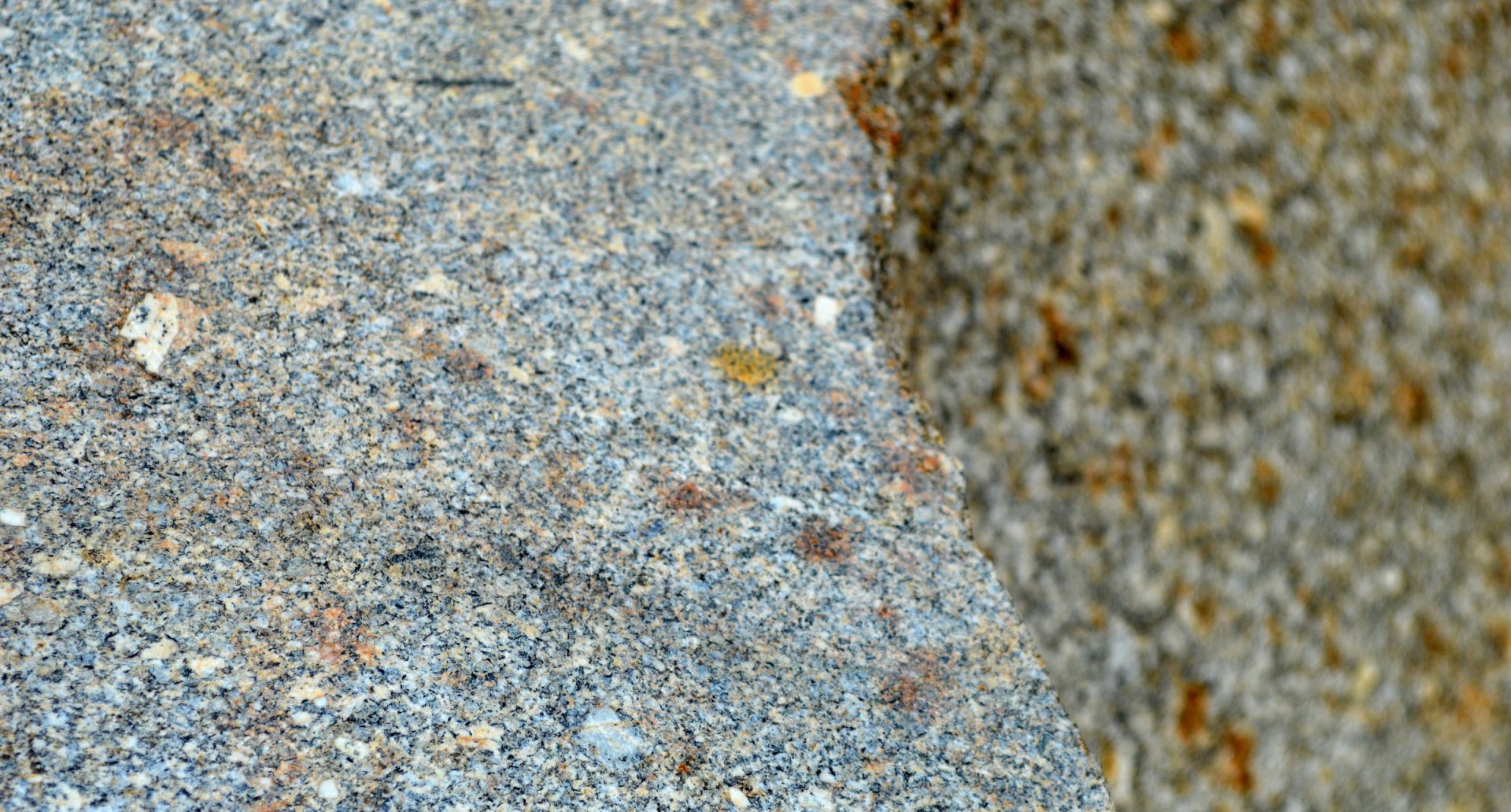Stone : cordierite-bearing granite
Type : plutonic magmatic rock
Age : 336 million years
Quarry : Roz Perez, Brennilis (Finistère)
The Art of Shaping a Rock
The “hearth” comes from a natural granite boulder from the Roz Perez quarry, which was cut in half and then hollowed out. The surface of the installation shows different levels of finishing: raw on the outside, smilled (a smille is a two-pointed hammer used to chip away at stone) on the inside of the hollow, and polished around the edge. The stonecutter has many tools at their disposal to work the rock: mallets, chisels, punches, pointerolles (also known as broaches), bouchardes, and more recently, pneumatic hammers to assist the mallet.
Geographical Indication: Brittany Granite
Granite workers from the region have joined forces to certify, promote, and enhance the value of “Breton granite” through the “Geographical Indication: Brittany Granite” label. This initiative encourages local governments and businesses to build and develop spaces using local, seasonal granite. Yes, granite can be used year-round!
A Rock That Rusts...
A smooth, moistened rock surface wonderfully reveals the minerals it contains. The polished surface of the “hearth,” perfectly gray after shaping, gradually becomes speckled with orange-brown. This rust comes from the leaching of certain iron-rich minerals. Water penetrates the rock and slowly attacks it. This process is called weathering. Weathered granite takes on a yellowish-beige hue.




